The Anti-Inflammatory Diet Doctors Recommend to Patients Over 60 is Simpler Than You Think (The Secret is Out)
After age 50, inflammation starts to increase in your body, with a dramatic shift after 60—setting the stage for arthritis, heart disease, and cognitive decline.
In the U.S., 80% of adults over 65 have at least one chronic condition, and inflammation is a major contributor to cardiovascular disease, cancer, dementia, and premature death in seniors.
Unlike acute inflammation that heals injuries, chronic inflammation silently damages your body day after day. The good news? The foods you eat can be powerful medicine.
This comprehensive guide reveals the 13 most powerful anti-inflammatory foods backed by medical research, the Mediterranean diet approach ranked #1 by doctors, and practical meal plans.
Simple lifestyle changes that amplify dietary benefits—giving you the tools to reduce inflammation, lower disease risk, and age healthier starting today.
Your Body at 60: Why Everything Starts Hurting More
Let’s talk about something your doctor might not explain well. After 60, your body basically starts a low-level fire that never goes out.

Scientists call it “inflammaging.” Your body does this.
Here’s what happens. Old cells that should die just hang around. They send out signals that make other cells act old too. It’s a cycle where senescent cells pile up and release inflammatory molecules that turn more cells senescent. Think of it like one rotten apple spoiling the whole basket.
The numbers tell the story. Even healthy older adults show inflammatory markers 2 to 4 times higher than younger people—things like TNF-α, IL-6, IL-1β, and C-reactive protein all spike up.
Between 2000 and 2050, the number of people over 60 will double worldwide—from 11% to 22% of everyone on Earth. We’re all living longer. But are we living better?
Starting in your early sixties, your risks jump for cancer, diabetes, heart disease, and dementia. The age-related diseases all share one thing: inflammation drives them. But here’s the good news. You can fight back with your fork.
The One Diet Doctors Actually Agree On
If you Google “best diet for inflammation,” you’ll find 50 different answers. But there’s one that keeps winning. The Mediterranean diet.

Johns Hopkins Medicine says it’s the top diet for controlling inflammation, thanks to omega-3s, vitamin C, polyphenols, and fiber. Not some health blogger. Johns Hopkins.
In 2025, the Mediterranean Diet ranked #1 for inflammation, diabetes, heart health, and gut health. That’s a clean sweep.
Want proof it works? Researchers tracked 25,000 American women and found those who ate Mediterranean-style had up to 23% lower risk of dying from any cause. Not 23% less inflammation. 23% less likely to die.
So what is this diet exactly?
It’s lots of vegetables, fruits, beans, whole grains, extra virgin olive oil, moderate fish, and very little red meat. Notice what’s missing? No calorie counting. No meal timing tricks. No cutting out entire food groups.
You eat real food. Your grandmother would recognize everything on your plate.
The 13 Foods That Fight Inflammation Best
Let’s get specific. These 13 foods are proven inflammation fighters. Add them to your week and you’ll notice the difference.
1. Fatty Fish—The Omega-3 Powerhouse
Salmon, sardines, and mackerel aren’t just healthy. They’re medicine.
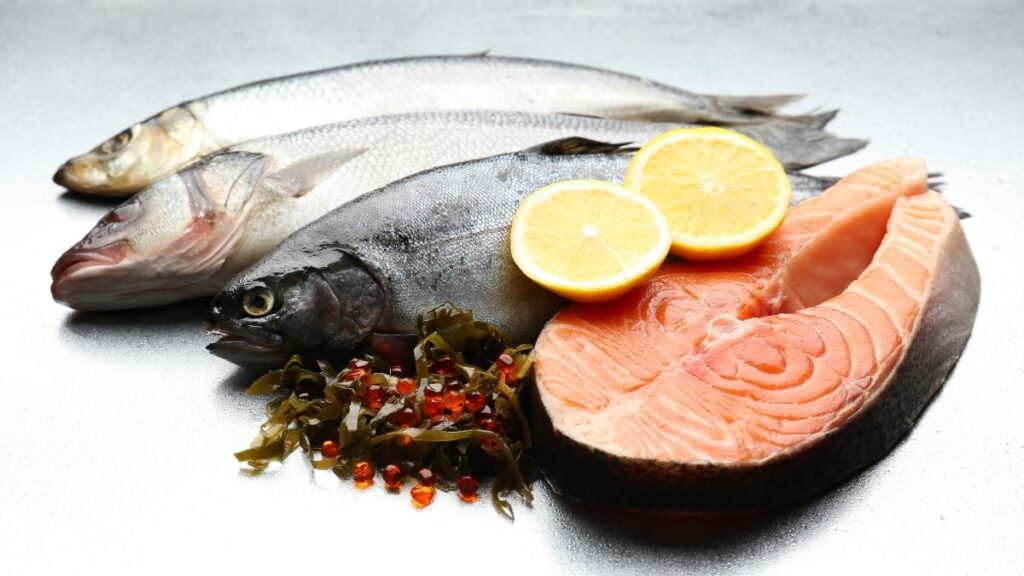
These fish contain EPA and DHA omega-3 fatty acids that reduce inflammation and help prevent metabolic syndrome, heart disease, diabetes, and kidney disease. A 2021 study of 70 research papers found fish oil significantly cut disease activity, pain, and morning stiffness in people with rheumatoid arthritis.
Your body turns these omega-3s into compounds called resolvins and protectins. Big words, simple job: they stop inflammation in its tracks.
You need two 3.5-ounce servings of fatty fish each week. That’s about the size of a deck of cards, twice a week.
Try this: Keep canned wild-caught salmon or sardines in your pantry. They’re cheap and they last forever. Mix them with mashed avocado on whole-grain toast for breakfast. Or grill fresh fish instead of frying it—heat destroys some of those good omega-3s.
2. Berries—Nature’s Candy That Heals
Blueberries. Strawberries. Raspberries. They all work.
Berries have anthocyanins that fight inflammation, reduce disease risk, and may help delay cancer development. Adults with extra weight who ate strawberries showed lower inflammatory markers linked to heart disease.
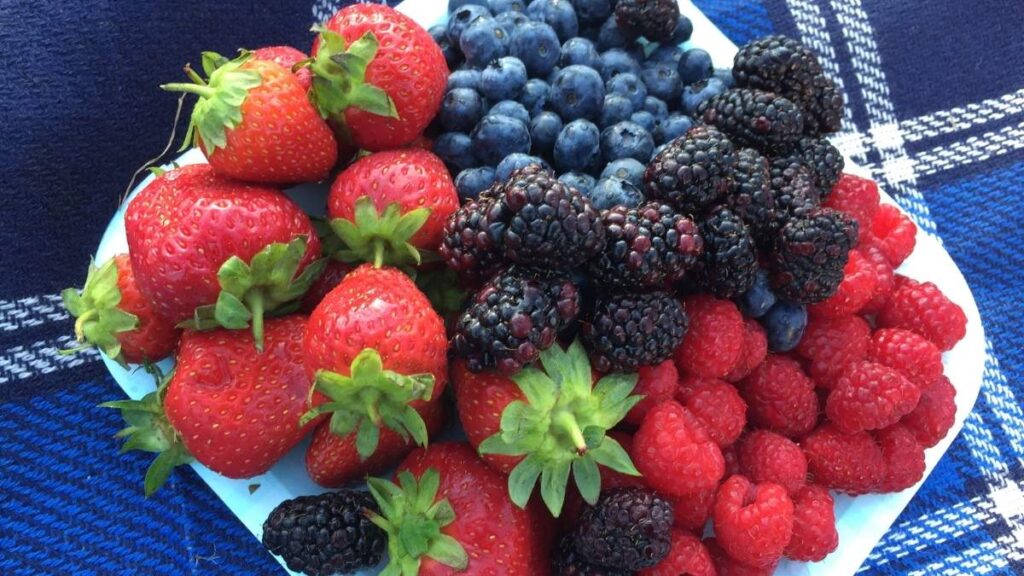
The compounds in berries are called anthocyanins and phytochemicals. They’re what give berries their deep colors. And they’re what protect your cells.
Aim for 1-2 cups daily.
What to do: Buy frozen berries all year. They’re just as good as fresh, cost less, and you can’t let them go bad. Toss a handful in Greek yogurt every morning. Or eat them frozen as a snack—they’re easier on your teeth than hard foods and taste great.
3. Extra Virgin Olive Oil—Liquid Gold for Your Health
This oil does more than taste good.
Extra virgin olive oil reduces your risk of heart disease, brain cancer, and obesity while lowering inflammatory markers significantly. It contains oleocanthal, an antioxidant that works like ibuprofen.
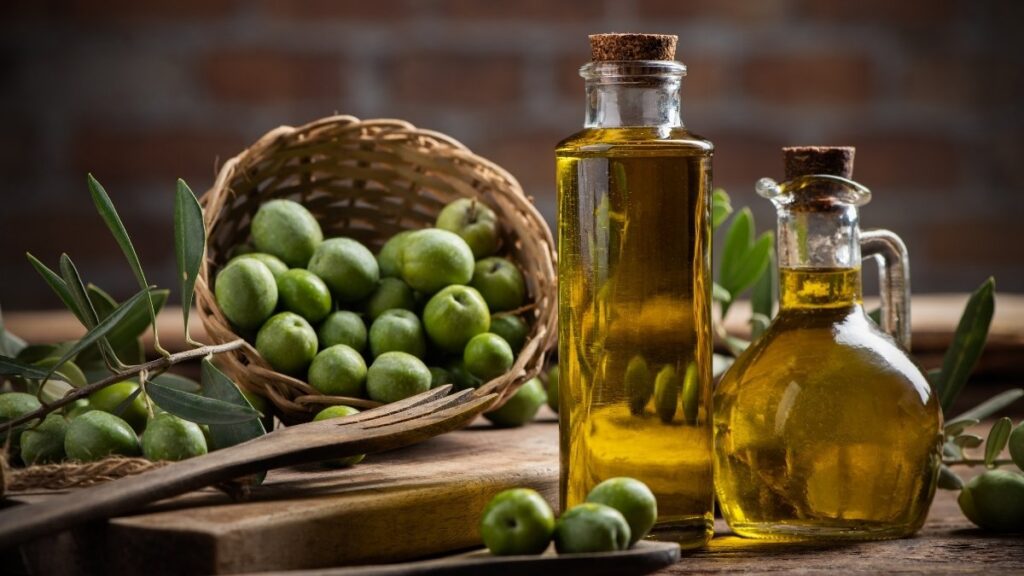
Read that again. A compound in olive oil acts like a painkiller. No prescription needed.
Use 2-4 tablespoons daily.
What to do: Swap butter for olive oil when you cook. Use it as your salad dressing base. Buy it in dark bottles and keep it away from heat—light and heat ruin the good stuff. Pour it over cooked vegetables or use it to sauté at medium heat. High heat kills the beneficial compounds.
4. Leafy Greens and Broccoli—The Vegetables Your Body Craves
Broccoli, kale, spinach. Yes, your mom was right.
Eating cruciferous vegetables lowers your risk of heart disease and cancer because of their anti-inflammatory antioxidants. Broccoli has sulforaphane that reduces inflammation by decreasing cytokines and NF-κB—molecules that drive inflammation.

These vegetables pack sulforaphane, fiber, and vitamins your body needs to fight back against chronic low-grade inflammation.
Get 2-3 cups daily.
What to do: Steam broccoli lightly for 3-4 minutes to keep the sulforaphane active. Then drizzle with olive oil and lemon. Keep pre-washed baby spinach around for easy salads. If chewing is hard, blend leafy greens into smoothies or soups. You get the same benefits.
5. Turmeric—The Golden Spice That Reduces Pain
That yellow spice in curry? It’s powerful.
Turmeric contains curcumin that fights inflammation from arthritis, diabetes, and other diseases. People with metabolic syndrome who took 1 gram of curcumin daily with black pepper saw big drops in C-reactive protein.

Black pepper is key. It boosts curcumin absorption by 2,000%. Without it, most of the curcumin just passes through you.
Try 500-1,000 mg curcumin daily as a supplement, or 1 teaspoon of turmeric powder.
What to do: Add half a teaspoon of turmeric to scrambled eggs, soups, or rice. Always add a pinch of black pepper. If you have arthritis, talk to your doctor about a curcumin supplement with piperine (that’s the compound from black pepper).
6. Nuts—Small Snacks, Big Benefits
Walnuts and almonds are your friends.
Studies link nuts to reduced inflammatory markers and lower risk of cardiovascular disease and diabetes.
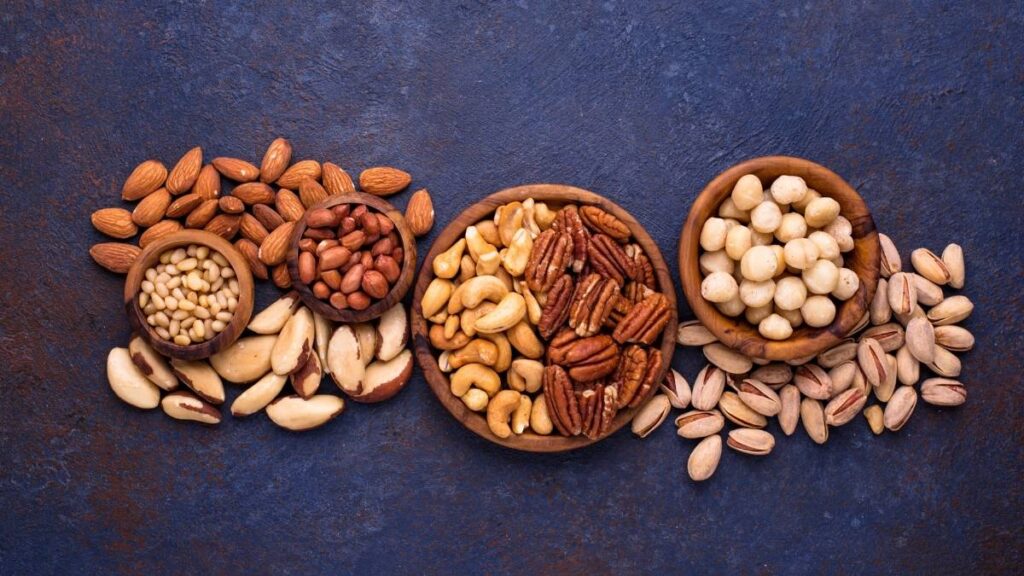
They give you omega-3 ALA, vitamin E, and fiber. All in one handful.
Eat 1 ounce daily. That’s about 23 almonds or 14 walnut halves.
What to do: Pre-portion nuts into small containers so you don’t overeat. Sprinkle chopped nuts on oatmeal, salads, or yogurt. Can’t chew well? Switch to nut butters or grind them fine.
7. Green Tea—The Drink That Protects Your Brain
Coffee gets all the attention. But green tea deserves respect.
Green tea is linked to lower risk of heart disease, cancer, Alzheimer’s, and obesity because of EGCG—a compound that blocks inflammation by reducing pro-inflammatory cytokine production.

EGCG stands for epigallocatechin-3-gallate. You don’t need to remember that. Just drink the tea.
Aim for 2-3 cups daily.
What to do: Brew green tea at 160-180°F, not boiling. Steep for 2-3 minutes to avoid bitterness. Drink it morning or early afternoon so it doesn’t mess with your sleep. Add lemon to boost antioxidant absorption. Skip the milk—it might reduce the benefits.
8. Tomatoes—The Cancer Fighter in Your Salad
Tomatoes are more than sandwich fillers.
They’re loaded with lycopene, an antioxidant that’s especially good at reducing pro-inflammatory compounds linked to several cancers.
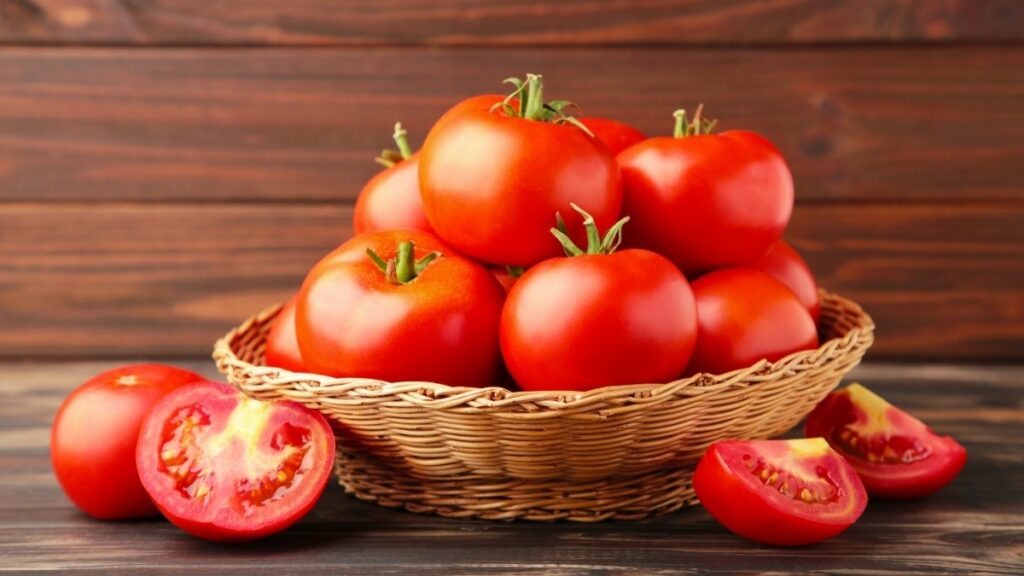
They also give you vitamin C and potassium.
Eat 1-2 medium tomatoes or half a cup of cooked tomatoes daily.
What to do: Cook tomatoes in olive oil. Lycopene is fat-soluble, so your body absorbs more when you eat it with fat. Make a simple tomato sauce with olive oil, garlic, and herbs. Or use canned San Marzano tomatoes—they’re convenient and available all year.
9. Grapes and Red Wine—Your Heart’s Best Friend (in Moderation)
Good news for wine lovers.
Grapes contain anthocyanins and resveratrol that reduce inflammation and may lower your risk of heart disease, diabetes, obesity, arthritis, and Alzheimer’s. People with heart failure who took 50mg resveratrol supplements twice daily for 3 months saw drops in inflammatory markers including IL-6.
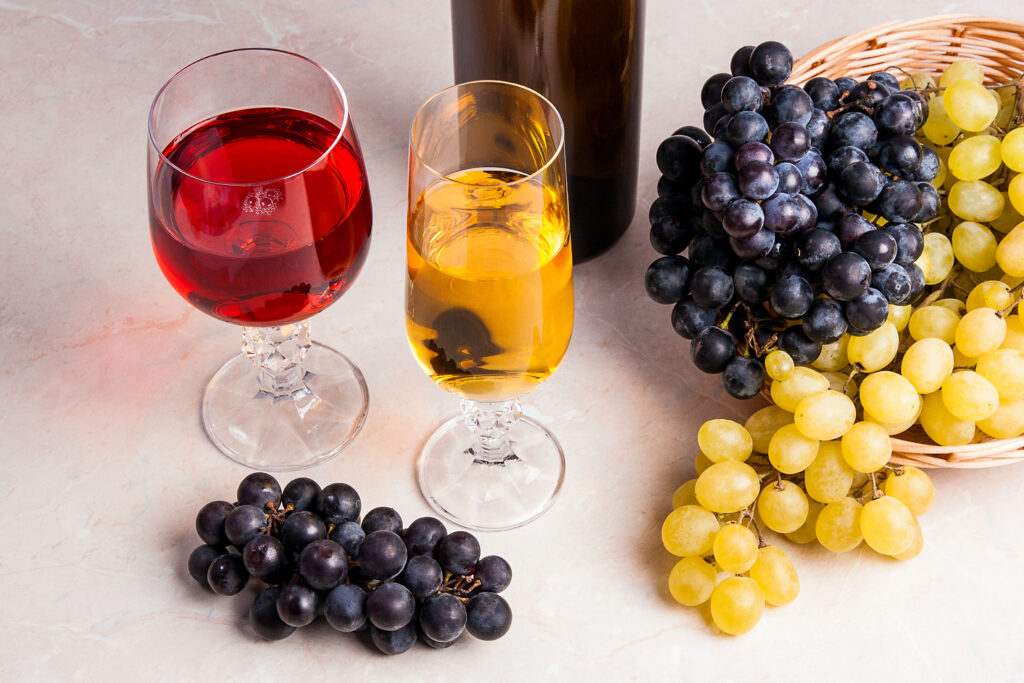
The resveratrol and anthocyanins do the heavy lifting.
Eat 1 cup of grapes or drink 4-5 ounces of red wine with meals if your doctor approves.
What to do: Freeze grapes for a refreshing snack. If you drink, limit yourself to one glass of red wine with dinner (women) or two (men). Don’t drink? Eat whole grapes instead. You get the resveratrol without the alcohol risks.
10. Dark Chocolate—Dessert That’s Actually Good for You
Finally, something sweet makes the list.
Dark chocolate has flavanols that improve blood vessel function, lower blood pressure, and keep the endothelial cells lining your arteries healthy. Eating 852mg of cocoa flavanols twice daily can improve vascular function within 3-8 hours.

But not all chocolate counts. You need the dark stuff.
Stick to 1 ounce (1-2 squares) of 70%+ dark chocolate.
What to do: Choose dark chocolate with at least 70% cacao and low sugar. Have one square after dinner as a treat. Melt it over fresh berries or mix cocoa powder (not Dutch-processed) into Greek yogurt for maximum flavanols.
11. Avocados—The Creamy Green Inflammation Fighter
Avocados aren’t just for toast photos.
Adults with excess weight who ate avocado for 12 weeks had reduced inflammatory markers IL-1β and CRP. Avocados contain carotenoids and tocopherols linked to lower cancer and heart disease risk.
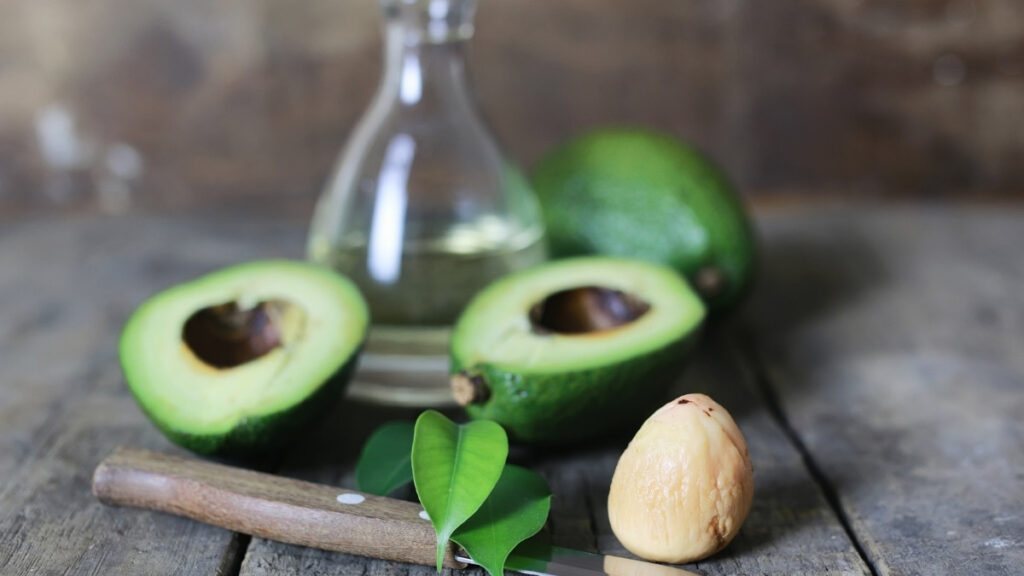
You get monounsaturated fats, potassium, fiber, and carotenoids.
Eat half an avocado daily.
What to do: Mash avocado with lemon juice and spread it on whole-grain toast instead of butter. Add it to smoothies for creaminess without dairy. Buy slightly firm avocados and ripen them on your counter. Once ripe, stick them in the fridge to make them last longer.
12. Whole Grains—The Fiber Your Body Needs
Quinoa. Brown rice. Oats. They all count.
Whole grain diets significantly decrease IL-6 and CRP in adults with metabolic syndrome.
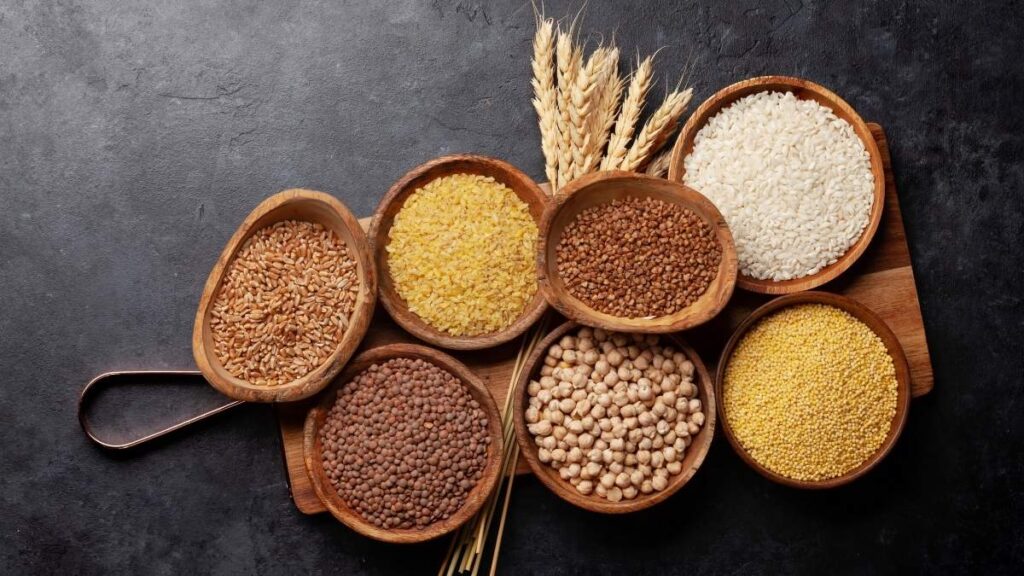
These grains pack fiber, B vitamins, and minerals your body uses to fight inflammation.
Eat 3-5 servings daily. Half a cup of cooked grains equals one serving.
What to do: Start your day with steel-cut oats topped with berries and walnuts. Cook brown rice or quinoa in big batches and refrigerate for easy meals. Choose whole-grain bread with at least 3g fiber per slice. Check the ingredients for “100% whole grain.”
13. Beans and Legumes—The Protein That Protects
Chickpeas, black beans, lentils. They’re Mediterranean diet staples for a reason.
These foods are rich in fiber and protein that help build meals around plant-based nutrition.
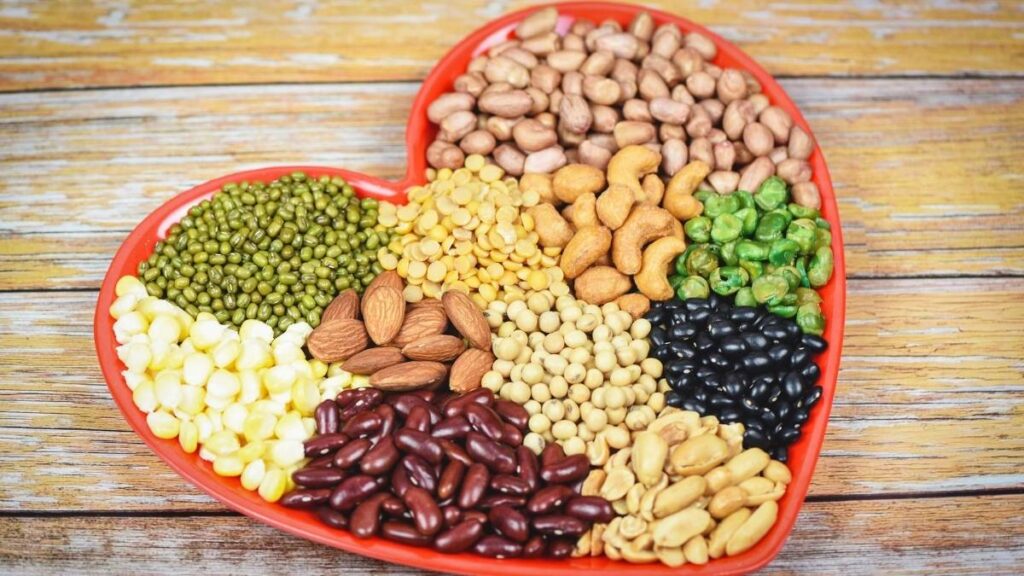
You get fiber, plant protein, and folate.
Aim for half a cup to 1 cup daily.
What to do: Keep canned low-sodium beans in your pantry. Rinse them before using to wash off excess sodium. Toss them in salads or soups. Mash them with olive oil for a quick hummus-style dip. Cook dried lentils in 20 minutes for cheap, quality protein.
The Foods Making Your Inflammation Worse
Now let’s talk about what to skip.
Some foods are like throwing gas on that inflammatory fire we talked about.
Higher intake of fast foods, frozen microwavable snacks, and processed meats link to higher inflammatory markers like CRP. Your body treats processed foods like an attack.
You should limit red meat, processed foods, refined carbohydrates, and added sugars. Trans fats in margarine, microwave popcorn, and refrigerated dough should be avoided completely.
Here’s your avoid list:
Processed foods: Potato chips, fast food burgers, frozen dinners. These inflammatory foods to avoid are everywhere. They’re cheap and convenient, but they’re wrecking your joints.
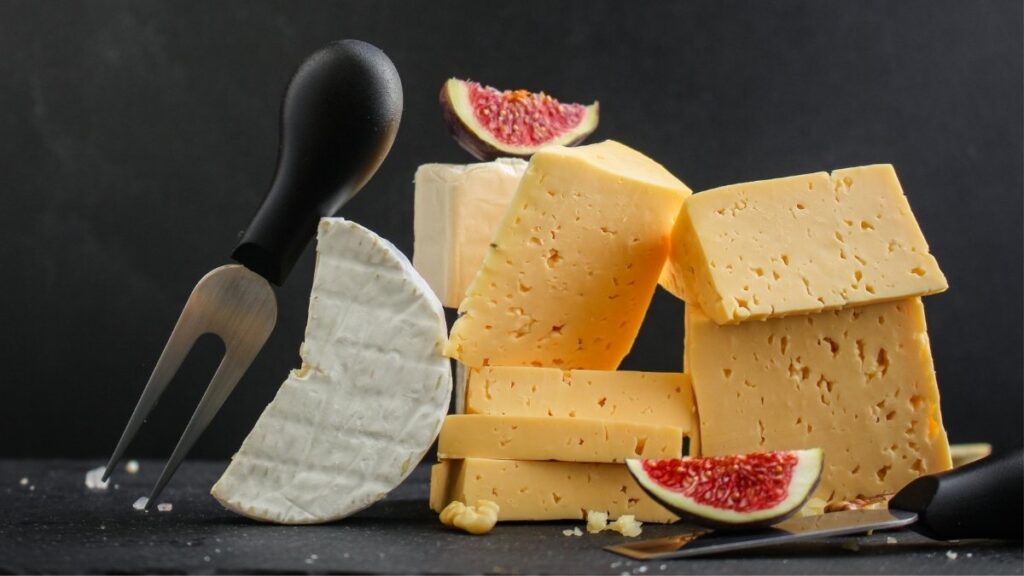
Refined carbs: White bread, white rice, crackers. Your body turns these into sugar fast, spiking inflammation.
Sugar-sweetened drinks: Soda, sweet tea, energy drinks. Liquid sugar is the worst kind.
Processed meats: Bacon, hot dogs, deli meats. The processing adds chemicals that trigger inflammation.
Fried foods: French fries, fried chicken, onion rings. The oils they use break down and become inflammatory when heated repeatedly.

This doesn’t mean never eat these foods again. But if you’re eating them daily, that’s a problem. Processed foods inflammation is real and measurable in your blood.
Cut back slowly. Replace one processed meal this week with a whole food meal. Next week, replace two. Small changes stick better than trying to flip your whole diet overnight.
Your 7-Day Anti-Inflammatory Eating Plan
Let’s make this simple. Here’s exactly what to eat for a week.
Monday:
- Breakfast: Greek yogurt with blueberries, walnuts, and ground flaxseed
- Snack: Apple slices with almond butter
- Lunch: Quinoa tabbouleh with chickpeas and lemon-olive oil dressing
- Snack: Handful of grapes and one square dark chocolate
- Dinner: Grilled salmon with roasted broccoli and sweet potato
Tuesday:
- Breakfast: Steel-cut oatmeal with strawberries and a drizzle of honey
- Snack: Carrot sticks with hummus
- Lunch: Spinach salad with grilled chicken, cherry tomatoes, and olive oil
- Snack: Small handful of almonds
- Dinner: Baked cod with quinoa and steamed kale
Wednesday:
- Breakfast: Scrambled eggs with turmeric, spinach, and whole-grain toast
- Snack: Fresh berries
- Lunch: Lentil soup with a side of mixed green salad
- Snack: Green tea and dark chocolate
- Dinner: Grilled chicken with brown rice and roasted vegetables
Thursday:
- Breakfast: Greek yogurt parfait with raspberries and chopped walnuts
- Snack: Orange slices
- Lunch: Mediterranean chickpea salad with cucumbers, tomatoes, and feta
- Snack: Celery with almond butter
- Dinner: Sardines on whole-grain crackers with avocado and tomato salad
Friday:
- Breakfast: Oatmeal with blueberries, cinnamon, and flaxseed
- Snack: Apple and a few walnuts
- Lunch: Quinoa bowl with black beans, avocado, and salsa
- Snack: Grapes
- Dinner: Baked salmon with roasted Brussels sprouts and sweet potato
Saturday:
- Breakfast: Whole-grain toast with mashed avocado and a poached egg
- Snack: Mixed berries
- Lunch: Tomato and white bean soup with whole-grain bread
- Snack: Dark chocolate and green tea
- Dinner: Grilled mackerel with brown rice and sautéed spinach
Sunday:
- Breakfast: Greek yogurt with strawberries, ground flaxseed, and almonds
- Snack: Pear slices
- Lunch: Mixed green salad with grilled salmon and olive oil dressing
- Snack: Small handful of mixed nuts
- Dinner: Chicken breast with quinoa and roasted broccoli
Notice the pattern? Lots of vegetables. Whole grains at most meals. Fish twice a week. Healthy fats from olive oil, nuts, and avocados.
This anti-inflammatory meal plan isn’t fancy. You can find everything at a regular grocery store. Most meals take 30 minutes or less to make.
Prep on Sunday. Cook your grains for the week. Wash and chop vegetables. Hard-boil some eggs. Then weekday meals get easier.
These Mediterranean meal plan recipes are flexible too. Swap salmon for sardines. Trade quinoa for brown rice. Don’t like kale? Use spinach. The key is sticking to whole foods and those 13 powerhouse items we covered.
The Other Ways to Fight Inflammation
Food matters most. But it’s not everything.
Your lifestyle habits either help your diet work or cancel it out completely.
Move your body: Regular physical activity improves DNA repair, boosts mitochondrial function, and can reduce your risk of cancer, diabetes, heart disease, and Alzheimer’s—just 15 minutes daily makes a difference. Thirty minutes a day of brisk walking, swimming, or biking acts as a natural anti-inflammatory agent.
You don’t need a gym membership. Walk around your neighborhood. Swim at the community pool. Ride a bike. Just move. Exercise and inflammation have an inverse relationship—more movement means less inflammation.
Sleep matters: Quality sleep and stress management prevent inflammation triggered by disrupted circadian rhythm. When you sleep poorly, your inflammatory markers spike the next day. Aim for 7-8 hours. Keep your room cool and dark. Skip the late-night TV.
Manage stress: Chronic stress is like pouring gasoline on inflammation. Find what works for you. Meditation. Prayer. Talking with friends. Playing with grandkids. Reading. Gardening. Stress management for seniors isn’t about eliminating stress—that’s impossible. It’s about having tools to handle it.
Quit smoking: Smoking promotes inflammation throughout the body. If you still smoke, quitting is the single best thing you can do for inflammation. Talk to your doctor about help.
These healthy aging lifestyle changes work together. You can’t out-exercise a terrible diet. You can’t out-eat chronic stress and no sleep. Everything connects.
The good news? Small improvements in each area add up fast. Walk 20 minutes. Eat salmon twice a week. Get to bed by 10. That’s already three wins.
Start Small, See Big Results
Here’s what you need to remember.
Anti-inflammatory diets based on whole foods reduce overall risk, morbidity, and mortality from chronic diseases. This isn’t a fad. It’s proven science.
The Mediterranean diet is your template. It’s the evidence-based standard that actually works.
Focus on those 13 powerhouse foods we covered. Add them in while you crowd out processed junk. You don’t need to eat perfectly. You just need to eat better than you did last week.
Combine your diet changes with movement and better sleep. That’s the winning combination.
Start with one change this week. Swap your morning toast for oatmeal with berries. Or replace one red meat dinner with salmon. Small, consistent changes lead to lasting results. Introduce dietary changes step by step so you can accommodate them without feeling abrupt.
Living an anti-inflammatory lifestyle after 60 isn’t about perfection. It’s about progress toward healthier aging.
Your body at 60 is different than it was at 30. That’s okay. But you can still feel good. You can still have energy. You can still reduce your risk of the big diseases.
It starts with your next meal.
What will you choose?








